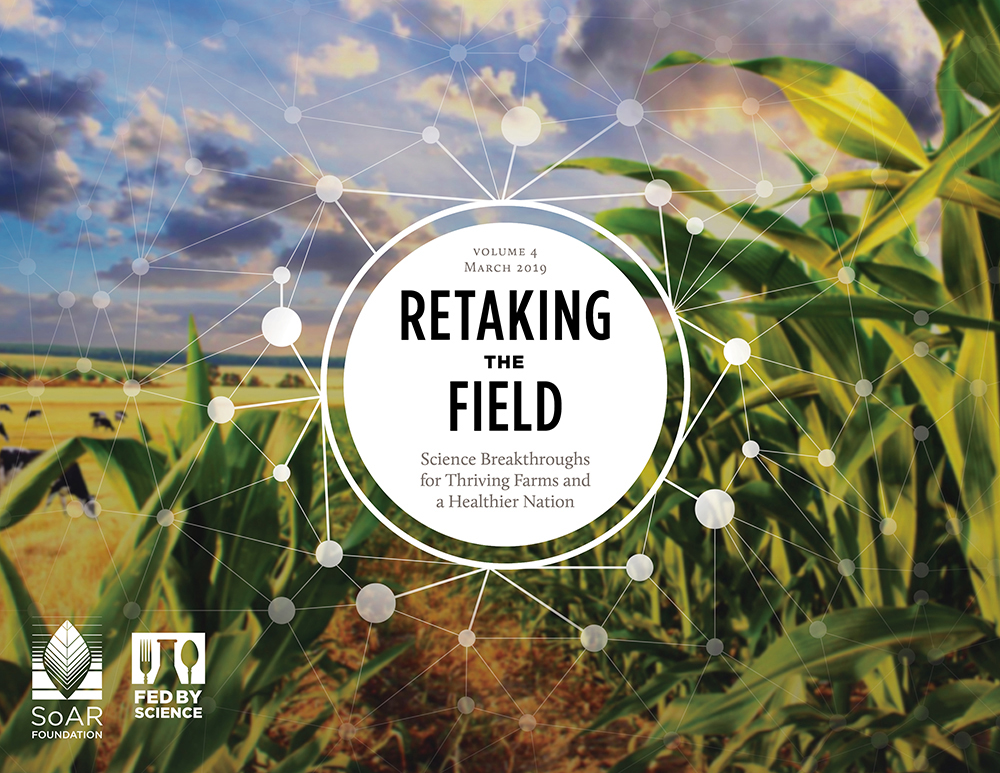Visit the "Retaking the Field" website | Download the report.
K-State research featured in national report identifying how to supercharge ag science in the U.S.
Supporters of Agricultural Research Foundation highlights universities’ crucial contributions
March 27, 2019
MANHATTAN, Kan. — A new report issued today showed how U.S. farmers — facing a surge of weather events and disease outbreaks — can increase production and revenues with innovations produced by federally funded agricultural research.
The U.S. needs to increase its investment in agricultural research or it risks falling further behind China, according to a new report issued by the Supporters of Agricultural Research (SoAR) Foundation and 20 FedByScience research institutions.
The new report, “Retaking the Field: Science Breakthroughs for Thriving Farms and a Healthier Nation,” highlights research projects in the five Science Breakthroughs areas identified as the most important fields to advance in agriculture by the year 2030:
- Genomics
- Microbiomes
- Sensors
- Data and informatics
- Transdisciplinary research
These areas were determined by the National Academies of Sciences, Engineering, and Medicine as part of a widespread scientific effort to prioritize agricultural research endeavors.
Soilborne disease research by K-State scientists Gretchen Sassenrath, Chris Little, Xiaomao Lin and Kraig Roozeboom is featured in the new report. It focused on charcoal rot in soybean crops and development of alternative management practices to improve soil health.
“Charcoal rot is one of the most consistent causes of soybean yield loss in Kansas year after year,” said Marty Draper, interim associate dean for research and graduate programs. “The research being done by our K-State team is innovative in their approach to learning the specific stressors in the Kansas environment that make it such a persistent problem.”
Dean of the College of Agriculture Ernie Minton said, “Dr. Sassenrath’s work exemplifies the ways we can meet challenges and, through research and applied science, solve problems in a way that makes agriculture more sustainable. Wisely and intelligently harnessing nature’s power by, in this case, using cover crops extends the reach of each research dollar that is invested.”
The return on that investment will be a healthier Kansas, healthier planet and healthier people, Minton said.
“Investments in these five science breakthroughs will allow us to achieve a number of broader goals for food and agriculture in the U.S. in the next decade,” said Thomas Grumbly, SoAR’s president. “But these advancements aren’t possible without federal funding for the research needed to tackle agriculture’s greatest problems. Farmers are getting hammered right now and they need innovation to at least soften the blows.”
Representatives from the agricultural and science sectors reconvened earlier this year to identify research goals that can only be achieved through advancing the five science breakthrough areas. By 2030, innovations in agricultural research like the projects highlighted in this report can:
- Reduce water use in agriculture by 20 percent
- Reduce fertilizer use by 15 percent
- Significantly reduce the need for fungicides and pesticides in plant production
- Radically reduce the incidence of infectious disease epidemics for livestock
- Reduce incidence of foodborne illnesses by 50 percent
- Increase the availability of new plant varieties and animal products to deliver food with enhanced nutrient content
“Now is the time to double down on federal investments in agricultural research,” Grumbly said. “There are urgent needs to produce more food, fiber and fuel while consuming fewer resources and protecting public health in the face of existing and emerging threats.”


